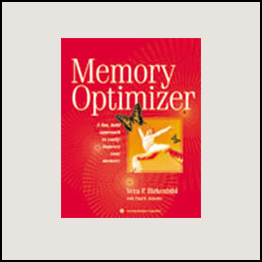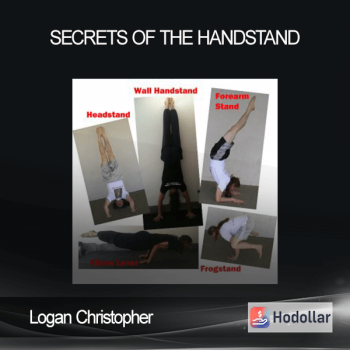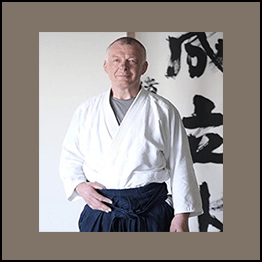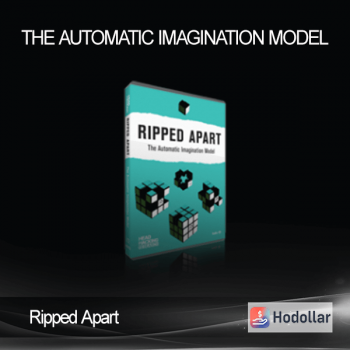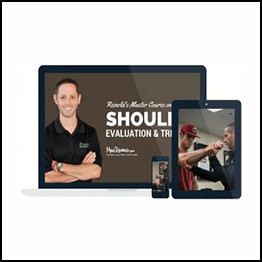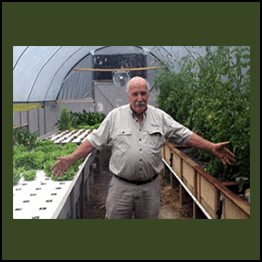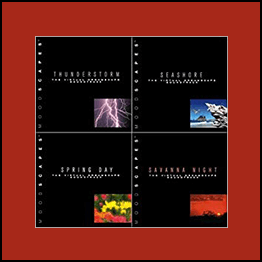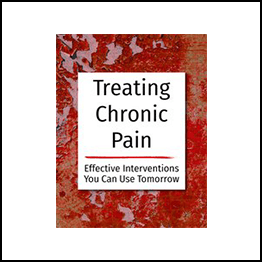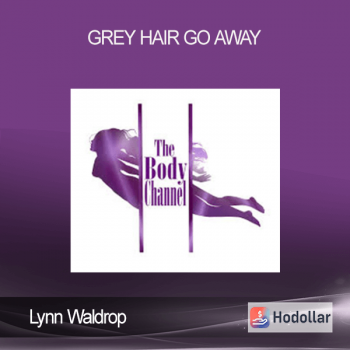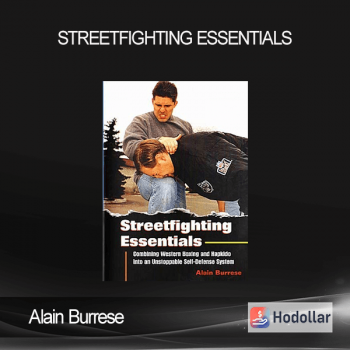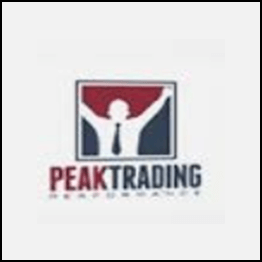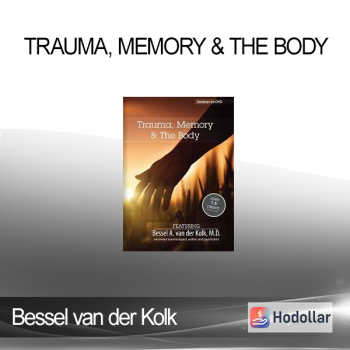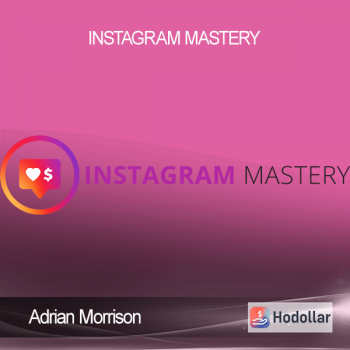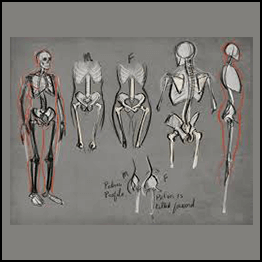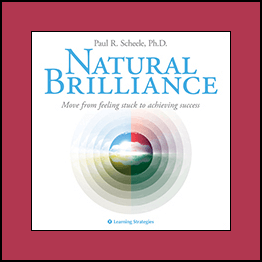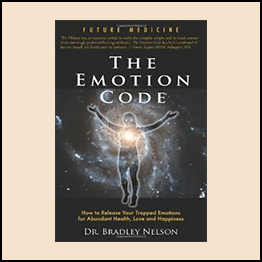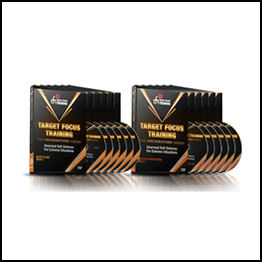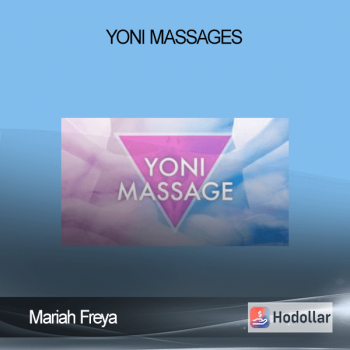Kit Laughlin – Master Shoulder Flexibility
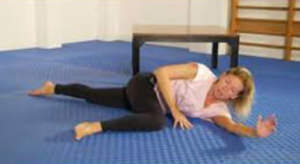 Kit Laughlin – Master Shoulder Flexibility
Kit Laughlin – Master Shoulder Flexibility
Stretching
In the beginning you are going to think of stretching as being some mechanical process that you simply have to repeat a number of times in order to get a specific effect. That is not actually how the body works. You have to create an environment internally where your body feels it’s safe to let go of the tension which, fundamentally, is protective tension. The body sees a new range of motion as a threat. You have to create an environment where relaxing in an otherwise threatening environment is a comfortable thing.
In order to make your body more symmetrical, always stretch the tighter side first, then the looser side and then the tighter side again.
Micro-movements at the end of the range of motion work on the fascia and help us to get accustomed to the position.
To come out of a stretch try to use a different set of muscles than the ones you were stretching.
Remapping of a new range of movement happens when you come out of a pose, so come out slowly.
Ankle Flexibility
The key to the full squat position is ankle flexibility.
In order for your bottom to get down to your heels in a full squat, the muscles of the calves and hamstrings have to get out of the way. They have to be soft enough for the angle between the femur and tibia to close.
For small muscles spend at least 30 seconds in the final position. For larger muscles spend at least two minutes in the final position.

Stretching the hip flexors has the most profound effect on the shape of the spine (looking from the side). Stretching hip flexors and quads has more effect on whole body tension than stretching any other muscle group.
Try to spend some time every day in your best squat position. Remember the full squat is a position of ease and rest for most of the undeveloped world!
Straight-legged calf stretches work more on the Achilles and gastrocs, whereas bent leg stretches work the soleus more.
The Single Leg Dog Pose works the whole of the posterior fascial line including the sciatic nerve.
‘Rollsquat’ (using a stick in between the thigh and calf using the RollStretch approach) is an excellent treatment for Achilles tendonitis.
The Standing Piriformis stretch is completely different to other Piriformis stretches because the thigh is in line with the spine.
Boxing the Compass is one of the best hip loosening sequences available.
The Relaxed Lunge is the best solo hip flexor stretch.
The Cossack Squat is one of the most important exercises to master for the pancake and general mobility. When done with a kettlebell, it is one of the finest strengthening and mobilizing exercises on the planet. The kettlebell allows you to balance more easily and forces glute activation.
The Squashed Frog is the one of the keys to mastering side splits.
The Standing Knee Lift is an active hip mobility and strengthening exercise. It improves balance and proprioception.
The Diamond Pose is a double piriformis and active flexibility exercise. It helps with the pike and pancake stretches.
Master the Pancake
If your clothing is tight on the skin it will act on the superficial fascia and create resistance to further stretching.
The foundational movement pattern of the pancake is movement of the pelvis in between the femurs.
The ST system uses three neural reflexes to achieve its goals.
Reciprocal inhibition reflex describes what happens when one of a pair of muscles contracts: the brain inhibits (removes neural energy from) the muscle being lengthened. The more you can activate a muscle, the stronger this effect becomes. Pulling yourself to your thighs using your hip flexors in the pike is a perfect example. Using your quads to extend the lower leg (and hence stretching your hamstrings) is another.
What happens when we do work with, or contract, a muscle isometrically at the very end of its range of movement (ROM) is described as the ‘Post-contraction inhibition reflex’: magically, the muscle resisting the movement relaxes a little, and we find we can move further into the ROM. The larger the muscle, the more extra contractions allow further lengthening.

The third neural reflex is called the ‘Apprehension reflex’. It is the body’s hard-wired self-protection mechanism. We do everything we can to reduce its effects, and is the main reason we need to be as comfortable as possible when we stretch. Another way we use this effect is to have the trunk touching the thigh in forward bends, and straighten the lower legs, rather than bending forwards with straight legs, the standard approach.
The pelvis and spine should roll forward as a single unit when thinking about any of the forwards bends (pike and pancake). Lengthening the spine helps roll the pelvis over, by contracting the muscles that extend the spine.
Skandasana is a strengthening and activation pose. It is the martial arts version of the Cossack squat. There is no better active flexibility for the groin, gracilis, and the inner hamstring. And like the Cossack, Skandasana works even better when weighted.
The Tailor pose is a foundational pose found in every form of yoga, dance, and martial arts.
The Chinese Hip Grinder warms up the hips quickly.
The Half Pancake is good for developing side splits
The Bench Weighted Straddle is a strengthening and glute-hamstring activation pose. Bent legs target the underbutt and straight legs target the adductors and inner hamstrings.
Lying Leg Circles and Lying Pendulum are active hip mobility exercises.
When you do fascial release wait for the stretchee’s body to accept the release. Forcing it will make the stretchee’s body tense up and resist release. This is related to the Apprehension reflex.
Master the Pike
The underbutt is very resistant to being stretched. Straight legged hamstring exercises do not stretch the underbutt; bent leg hamstring stretches do.
Sometimes while you are doing a slow stretch, you are not aware of a big sensation. This does not mean you should go into a more intense version. Come out of the stretch and see how the body processes it over the next couple of days. If there is no negative effect, then you know that you can go into a more intense version next time.
The outer hamstring is the tightest hamstring line for most people.
The body will always move to avoid the stretch. It’s important to maintain proper form to feel the intensity.
Ballistic (quicker) flexibility eventually translates into passive (slower) flexibility.
The experience of your face on your legs in a pike remakes the proprioceptive map.
If any part of your body (i.e. knee cap) has a niggle during a stretch, it will not allow your body to relax. It will kill the stretch. You must be comfortable!
When fascia is stuck to muscle underneath, the brain feels restriction and will not allow the muscle cannot relax. When the fascia is releases from the muscle, the body can relax.
Your body is unique. Expose it to different challenges and see which one it responds to the most. Then concentrate your efforts on mastering that element.
The Lunge Hamstring directly addresses peoples’ major limitations in the pike.
The ‘Cheating’ Bent Leg Forward Bend helps to stretch the lower back. The amount of the stretch is controlled by leg-straightening tension, and how much you pull on your arms.
The Modified Plough stretches all the muscles and fascia around the middle and upper spine, including the neck.
In the Hands Free Pike, if you interlock the fingers and turn the hands out you will wind up the fascia more.
Master Shoulder Mobility
When you raise your arm up there are three phases of movement; first the arm moves in the shoulder girdle, then the shoulder girdle moves back, and finally there is thoracic extension.
Doing the partner version of a stretch shows your body which position to be in and helps with neural remapping. It is then easier to do the solo version of the stretch, where you try to reproduce similar sensations.
Strengthening the external rotators is important for shoulder health and stability because usually they are the weakest of the Rotator Cuff (RC) muscles, and because it is the combined forces of all the rotator cuff muscles pulling the head of the humerus into the glenoid cavity that creates shoulder joint strength and stability. These muscles are small, and usually can’t be seen (under other muscles) and all four move with the shoulder girdle. If these muscles cannot actively stabilise the shoulder joint, then the larger shoulder muscles (pecs, lats, traps) will be switched off (inhibited) by the brain.
The Rubber Cord Sequence helps focus on shoulder positioning. It gives you a clue as to where to work today.
Master The Back Bend and Arch Body Hold
Do a counter pose after every back bend. Counter poses relax all the muscles involved in the main stretch. Counter poses reduce whole-body tension following a hard stretch.
Hip flexor length is fundamental to doing a good back bend but quads can be extremely important too. Better to think of quads–hip flexors as one muscle group.
Don’t expect your body to be the same every day. Don’t expect both sides of your body to have the same range of motion. The goal is to try and even your left and right side out over time.
It is important that the stretcher is relaxed to facilitate the stretchee relaxing. This is not obvious, but if the person sitting or lying on you is tense or nervous, that tension will be communicated to the stretchee.
Awareness of pelvic position and what goes on in the front of the hips is invaluable across all movements.
If you have a sore lower back from sitting, a hip flexor stretch may help relieve it.
The capacity to bend the spine backwards is best developed passively first. For most people the thoracic spine is the most inflexible part of the spine. Only do passive back bending on a stable object (Swiss balls are unstable, which makes them excellent for some strengthening exercises, but they deform under the shape of your spine, so are limited in the extent they can help you loosen the thoracic spine).
From a health point of view it is more important to have the spine flexible bending backwards than forwards, as this is the ROM that is lost first as the body ages, and the changes that accompany ageing are all in the other plane (so tightening of pec. minor and long head of biceps, flexion of the thoracic spine and shortening of the rib and abdominal muscles). Office work intensifies this process. Passive back bending reverses it.
The Wall Quad Hip Flexor stretch with a partner is the strongest combination stretch of this sort. It’s very effective even for people with good hip flexor mobility. The reason is that both ends of the quads and hip flexors are stretched at the same time. It’s common for people with loose hip flexors and loose quads—when either end of these groups are stretched by themselves—to find that the combined stretch is a massive experience.
The Box Bridge is the best way to improve your back bend besides hip flexor stretching. It is an excellent middle and upper back exercise since it moves the compression up and out of the lumbar spine by moving the stretching requirement out of the lower back into the middle and upper back.
The Arch Body Hold is a strengthening and activation pose for all the muscles at the back of the body (the “posterior chain”).
About Kit Laughlin

Kit Laughlin is the authority on the subject of stretching and strengthening, and many areas in between. He is also an academic, logician, ex-olympic-weightlifter, massage therapist, and medical anthropologist, to name a few.
Kit developed Stretch Therapy over the last 30 years and he presents workshops world-wide in these techniques. He has written three best-selling books, and teaches his methods to practitioners of medicine, chiropractic, osteopathy, physiotherapy, yoga, pilates and massage therapy, and to people everywhere to rehabilitate, avoid injury, enhance performance or maximise wellbeing.
Get Download Kit Laughlin – Master Shoulder Flexibility
Shipping method
– After making a purchase, you will see a View your order link to the Downloads page. Here you can download all the files related to your order.
– In case the link is broken for any reason, please contact us and we will resend a new download link.
– If you can’t find the download link, please don’t worry about it. This course is usually available and shipped within one day
– The course you purchased will have lifetime access
– Our support staff is the best by far! Please contact us at email: [email protected] and we will be happy to help!

